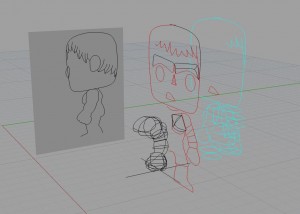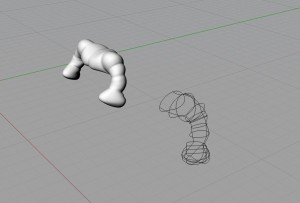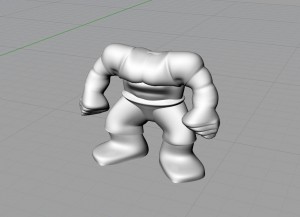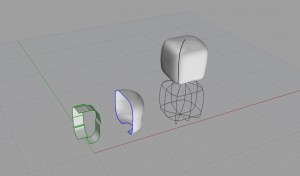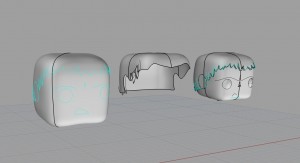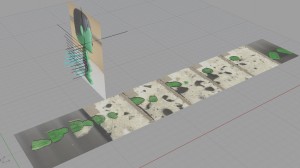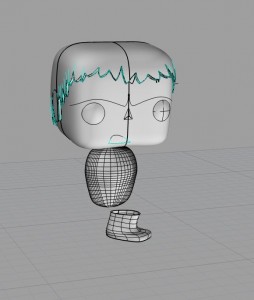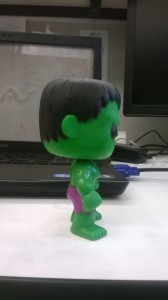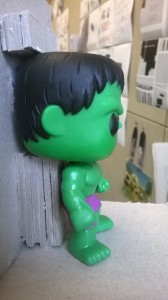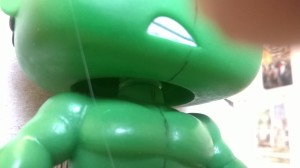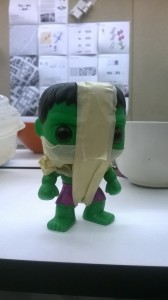I added more complex geometry to the base surfaces I created the week before by intersecting shapes and adjusting them using control point editing and cage edit. I went back to the curves I used for the other surface and added to them to continue the fluid forms.
I make the legs of the pants one surface and then split the surface of the torso to them edit the surface further and adjust the curve network to create the crotch area of the pants. This way I could have the shape of the legs district from the rest and create the lip of the pants against the torso.
Arms were constructed very quickly using circles that were placed in the middle of each muscle and at the crease where the muscles would meet. This technique extended into the chest so that when the surface was mirrored, there is an indent delineating the pecks.
The abs and back muscles along the spine were edited using control point edit and cage edit.
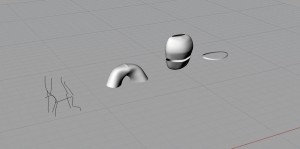
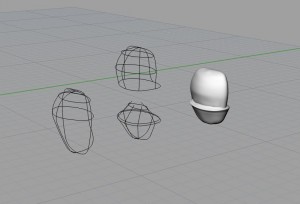
Circles used to create the prominent muscle structure
resulting form

